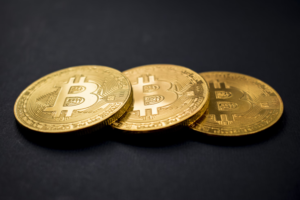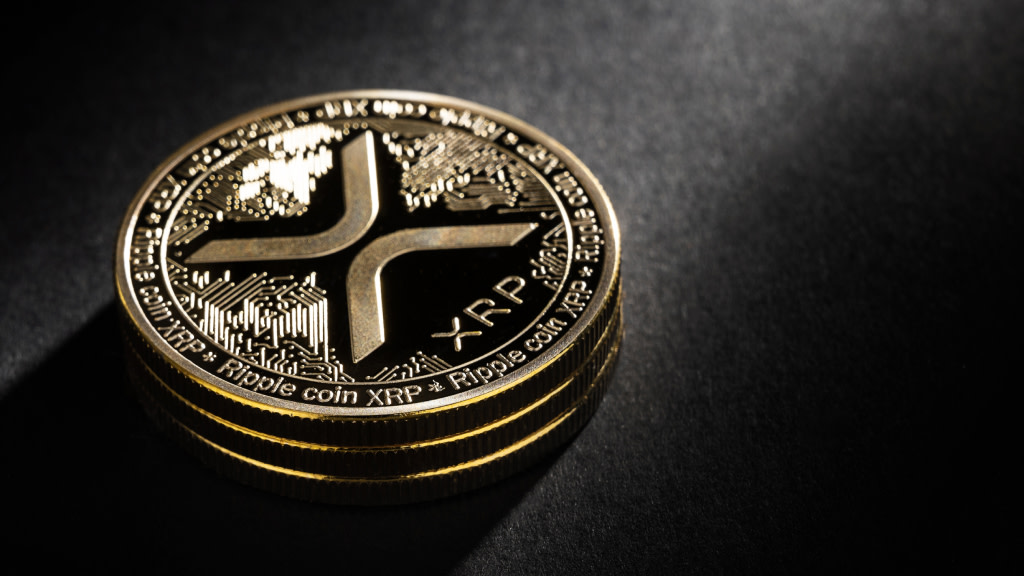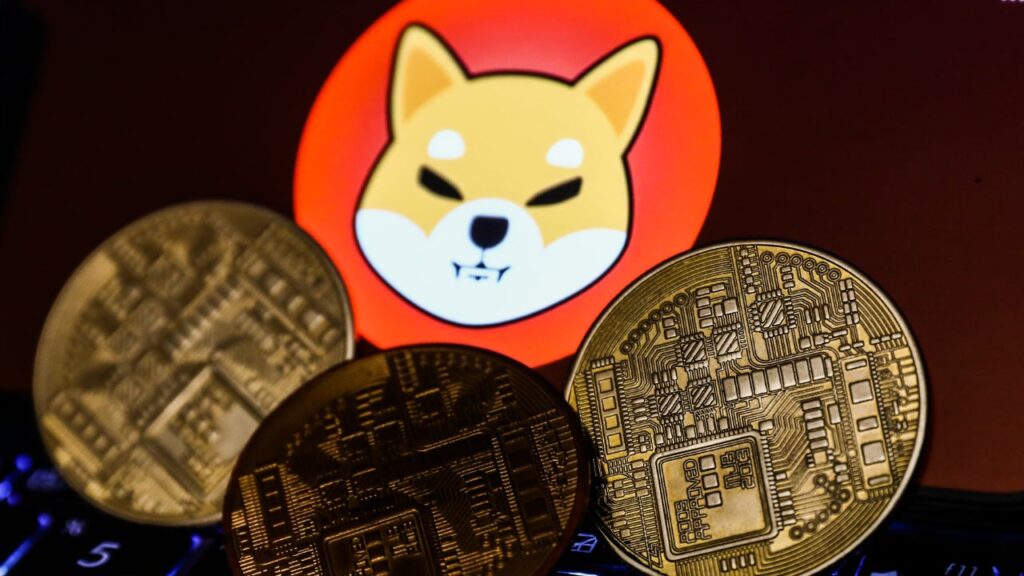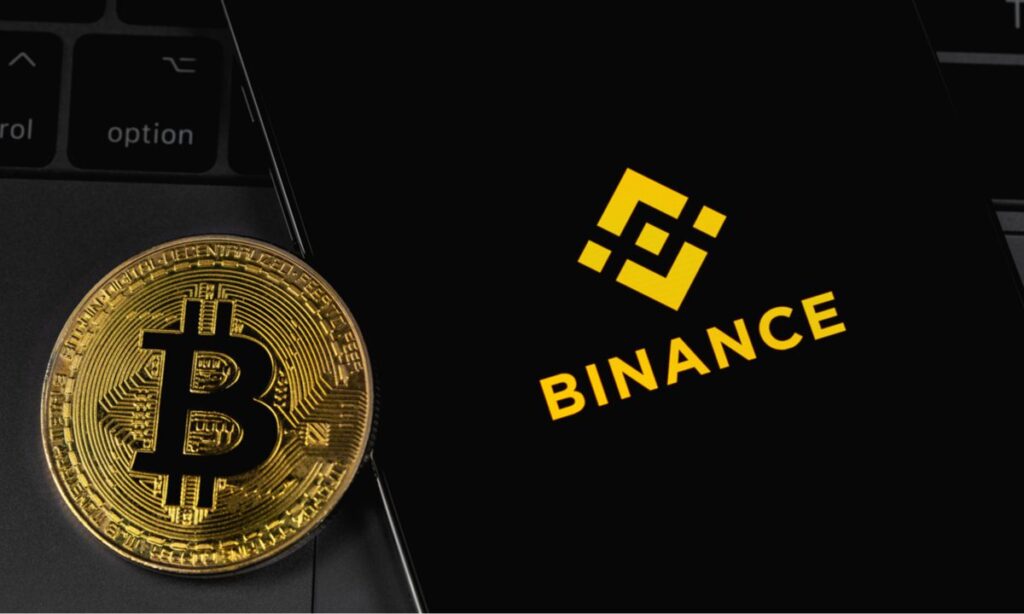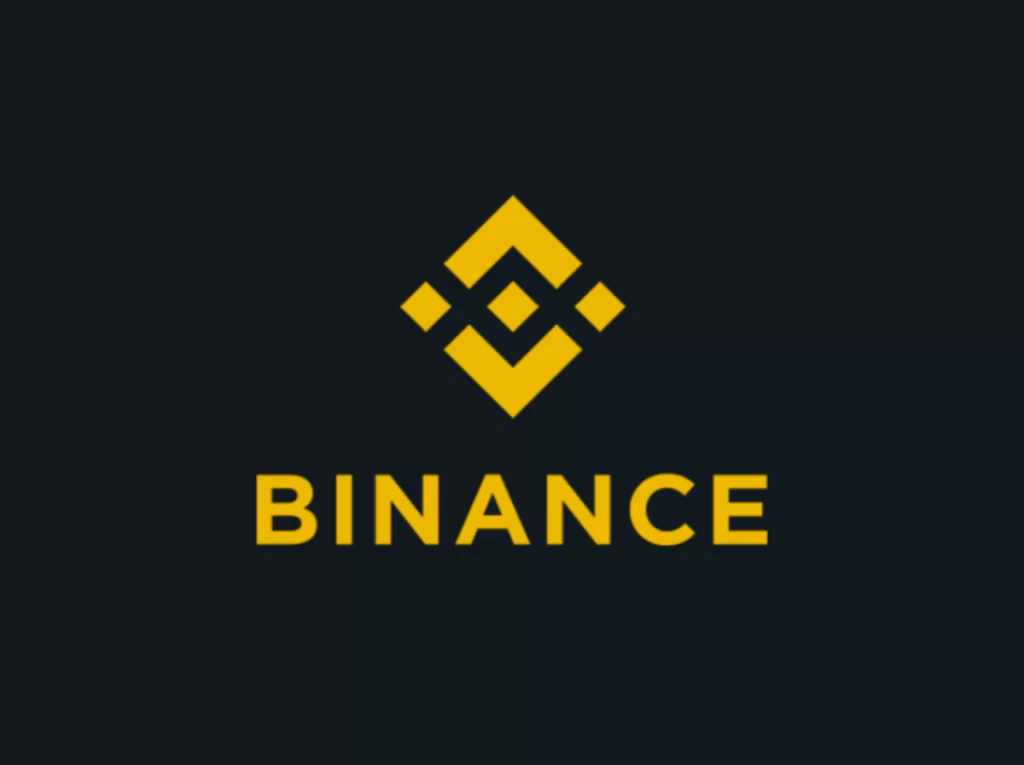Roman Storm, a co-founder of the cryptocurrency mixing service Tornado Cash, was taken into custody by the United States Department of Justice (DOJ) on August 23 on charges of money laundering and other offenses.
However, his lawyer, Brian Klein, swiftly announced that Storm has been granted bail following his arrest.
Expressing his discontent, Klein highlighted his disappointment with the prosecution’s decision to target Storm for his involvement in software development.
Klein stated that this legal approach sets a risky precedent, potentially affecting all software developers.
Storm’s release on bail occurred shortly after the DOJ’s announcement of his arrest and the charges brought against him and fellow Tornado Cash founder Roman Semenov on August 23.
The charges presented by U.S. authorities revolve around allegations of operating Tornado Cash’s services and purportedly laundering over $1 billion in illicit funds.
Additional charges entail accusations of engaging in a conspiracy to violate sanctions and running an unlicensed money transmitting business.
Despite the release of Storm on bail, there has been no immediate response from his lawyer, Klein, in relation to Cointelegraph’s inquiry.
This development emerges approximately a year after the U.S. Treasury Department designated Tornado Cash-associated addresses as part of the Office of Foreign Asset Control’s (OFAC) list of Specially Designated Nationals.
READ MORE:Ordinal Inscriptions Maintain Dominance on Bitcoin Network Despite Price Dip
This action led to the subsequent arrest of another Tornado Cash developer, Alexey Pertsev, in the Netherlands.
Pertsev spent around nine months in custody before being released in April 2023.
It is important to note that Storm and Pertsev are not the sole developers of Tornado Cash who have faced legal actions.
Roman Semenov, another co-founder, was also added to OFAC’s list of Specially Designated Nationals and Blocked Persons on August 23.
Despite being listed, Semenov has yet to be arrested for the alleged offenses.
The situation reflects an ongoing legal battle surrounding the cryptocurrency mixing service and its developers.
Other Stories:
New DeSo Network Friend.tech Generates Over $1 Million in 24 Hours
UK Prime Minister Allocates £100 Million to Acquire Computer Chips for AI Advancement
Bitget Cryptocurrency Exchange Enhances KYC Procedures to Align with Global Regulations
An individual identifying as Nadir Hajarabi, who professes to have formerly been associated with Worldcoin, has made serious allegations against the project’s legitimacy, suggesting potential involvement in unlawful activities during their tenure.
In a video uploaded on August 23rd to YouTube, Hajarabi disclosed witnessing what they termed “highly questionable” practices within Worldcoin (WLD).
These actions, which they considered to be either reckless or illegal, occurred before Hajarabi’s departure from the project just prior to the token’s launch on July 24th.
Hajarabi alleged that not only was their compensation withheld, but they were also in communication with authorities from various jurisdictions who were investigating the actions of Worldcoin.
Hajarabi outlined that the Worldcoin initiative suffered from a multitude of shortcomings in its execution, indicating that corners were cut during the preparation of the white paper.
They attested to having noticed warning signals “right from the outset.”
Attempts to address their concerns with the CEO of Worldcoin and the organization’s legal team yielded unsatisfactory explanations regarding the apparent disparities between the project’s mission and its actual implementation.
“I have been denied rightful compensation for my dedicated efforts during ETHCC and ETH Global due to raising valid questions,” Hajarabi conveyed to Cointelegraph.
“This treatment is unjust, and I refuse to be silenced and financially mistreated.
Regardless of the extent of my influence, I am committed to advocating for what is rightfully owed to me… a company that professes to rectify financial disparities should not perpetuate economic harm onto its workforce.”
Cointelegraph was unable to independently corroborate Hajarabi’s assertions, which involved their provision of “specialized services” to the organization.
A photograph uploaded to X (formerly Twitter) appeared to feature Hajarabi with one of Worldcoin’s iris-scanning devices.
Their YouTube channel, initiated in September 2013, solely displayed one video – the aforementioned allegations against Worldcoin.
READ MORE: Shibarium’s Anticipated Layer-2 Launch Nears, Promising Enhanced User Experience and Security
An X account ostensibly controlled by the same individual exhibited a snapshot of an ETHGlobal Paris badge that displayed Hajarabi’s name and affiliation with Worldcoin.
Furthermore, a LinkedIn profile attributed to Hajarabi seemed to correspond with the individual in the YouTube video – a Parisian resident experienced in nonfungible tokens, Web3 projects, and smart contracts.
Cointelegraph attempted to solicit a response from Worldcoin, but no reply was received at the time of this publication.
Worldcoin was initially established with the aim of distinguishing authentic individuals from automated entities by utilizing retinal scans for identity authentication via their specialized orbs.
Over 2 million registrations were recorded prior to the Worldcoin token’s launch in July.
Preceding the token and verification process rollout, numerous individuals within and beyond the cryptocurrency domain raised objections against the project, citing concerns regarding data privacy.
The Bavarian State Office for Data Protection Supervision reportedly initiated an inquiry into Worldcoin in November 2022, while the French National Commission on Informatics and Liberty reportedly labeled the organization’s data gathering techniques as “dubious.”
Similar reservations were echoed by the Information Commissioner’s Office in the UK.
In August, Kenya’s Minister of Internal Security announced the suspension of Worldcoin’s local operations until the assessment of potential risks to residents was completed.
This action reportedly included a search and confiscation of the organization’s equipment.
Subsequently, Argentina’s Agency for Access to Public Information launched an investigation into Worldcoin’s handling, storage, and utilization of customer data, citing apprehensions about security and privacy.
Other Stories:
Galaxy Digital Poised to Manage FTX’s Recovered Cryptocurrency Holdings
Binance’s Russian P2P Crypto Exchange Renames Sanctioned Banks Amidst Controversy
XRP Faces Investor Sell-Off as Whale Transfers 29 Million Tokens Amid Price Dip
More than 50% of Russian citizens are open to the idea of entrusting their funds to a central bank digital currency (CBDC), as revealed in a recent survey jointly conducted by the Saint Petersburg Exchange and the Russian Trading System (RTS).
However, the same level of trust does not extend when larger sums are considered.
Only 17% of respondents express confidence in the digital ruble for amounts exceeding 20,000 rubles (approximately $212).
The survey encompassed a broad demographic range, involving over 2,000 participants aged between 18 and 65 across the nation.
The findings, disclosed on August 24 in the local newspaper Izvestia, unveiled that 58.3% of those surveyed are theoretically inclined to invest their funds in a CBDC.
Within this group, the majority (23.8%) would be comfortable transferring sums ranging from 5,000 rubles ($53) to 20,000 rubles ($212) into digital currency.
A smaller fraction, 9%, can envision storing 20,000 to 50,000 rubles ($212 to $529) in a CBDC, while 2% are open to entrusting amounts up to 100,000 rubles ($1,058).
Notably, a mere 2.4% are willing to embrace the notion of placing all their finances in a central bank digital currency.
READ MORE: Bitget Cryptocurrency Exchange Enhances KYC Procedures to Align with Global Regulations
The transition towards digital rubles has already commenced in Russia, with trials commencing on August 15. Thirteen banks are participating in these preliminary tests alongside a select group of their clientele.
This phase of testing focuses on refining fundamental operations, with emphasis on processes such as the establishment and funding of digital ruble accounts, facilitating peer-to-peer digital ruble transactions, optimizing automated payments, and introducing QR codes for streamlined purchase and service transactions.
Olga Skorobogatova, the First Deputy Governor of the Bank of Russia, has outlined a strategic vision to integrate the digital ruble into widespread usage between the years 2025 and 2027.
The ongoing survey underscores a burgeoning acceptance of the CBDC concept among Russians, but also highlights the need for further confidence-building measures, particularly for larger financial commitments.
Other Stories:
New DeSo Network Friend.tech Generates Over $1 Million in 24 Hours
Ordinal Inscriptions Maintain Dominance on Bitcoin Network Despite Price Dip
UK Prime Minister Allocates £100 Million to Acquire Computer Chips for AI Advancement
Pro-XRP advocate John Deaton has criticized the United States Securities and Exchange Commission (SEC) for its handling of the allegations against Ripple’s CEO Brad Garlinghouse.
Deaton asserts that the SEC’s accusations of aiding and abetting were misguided.
He points to revelations from former SEC officials Bill Hinman and Jay Clayton during the SEC vs. Ripple Labs case, which suggested that XRP should have been considered a non-security.
Despite this, the SEC ignored this information for an extended period.
Digital Asset Investor.XRP, a user on the platform X (previously known as Twitter), expressed the opinion that summoning a16z attorneys Lowell Ness and Chris Dixon, alongside former SEC officials Clayton and Hinman, would have been a more strategic move in the legal battle between the SEC and Ripple.
Deaton concurs that Hinman’s testimony would have been pivotal, but acknowledges the challenges of legally summoning a former SEC chair for trial.
Nonetheless, Deaton argues that the SEC made a mistake in charging Garlinghouse, particularly given Clayton’s history of pursuing complaints against executives in non-fraudulent contexts.
READ MORE: Binance’s Russian P2P Crypto Exchange Renames Sanctioned Banks Amidst Controversy
Deaton emphasizes the significance of Clayton as a witness whose testimony should have been presented in court.
Clayton had interactions with Ripple’s CEO and chief technology officer, during which Garlinghouse remarked that “Ripple is living in purgatory” after the Hinman speech.
However, neither Clayton nor Hinman explicitly designated XRP as a security.
Seeking clarity from these former SEC officials could have potentially saved time and legal expenses, potentially fostering greater adoption of cryptocurrencies.
Despite Judge Analisa Torres ruling that XRP doesn’t qualify as a security in certain cases, the SEC aims to challenge this decision.
In a recent development, a substantial holder of XRP transferred over $20 million worth of tokens to exchanges amid the ongoing breach of its support levels, indicating potential market instability.
Other Stories:
Bitcoin’s Evolution Accelerates: Recursive Inscriptions Unveil New Horizons Beyond Cryptocurrency
Galaxy Digital Poised to Manage FTX’s Recovered Cryptocurrency Holdings
XRP Faces Investor Sell-Off as Whale Transfers 29 Million Tokens Amid Price Dip
Blockchain technology continues its forward march with the imminent public unveiling of Shibarium’s eagerly awaited layer-2 version.
The Shiba Inu team has eagerly announced that the platform is in seamless operation and merely awaits its public debut.
Behind Shibarium, an Ethereum layer-2 network, stands a team that has signaled the platform’s current live status in its private mode.
Following a two-day test that demonstrated its smooth functionality, the platform teeters on the edge of accessibility to the wider public.
In a recent blog post, the Shibarium team assured users that their funds remain secure, and an enhanced experience awaits once the platform opens its doors to all.
The early beneficiaries of this update are already celebrating as bridged BONE tokens make their entry.
Responding to this development, the Shibarium community, affectionately known as the Shib Army, has been expressing their excitement on X (previously known as Twitter).
The team proudly expressed its contentment with the progress achieved, asserting that the network has reached a “ready” state after meticulous testing and parameter adjustments.
Notably, block generation remains consistently glitch-free.
Recent updates to the platform encompass significant safety augmentations and a robust monitoring system.
These enhancements encompass the introduction of rate limitations at the remote procedure call (RPC) level and an automatic server reset mechanism.
READ MORE:SEC Lawsuit Stifles XRP’s US Adoption Potential, Pro-XRP Advocate Asserts Amid Coinbase’s Moves
These proactive measures aim to preclude potential issues stemming from abrupt traffic spikes, ensuring users a reliable and uninterrupted experience.
During its testing phase, the network garnered substantial attention, with millions of wallets engaging in over 22 million transactions spanning a four-month period.
However, the initial launch wasn’t devoid of challenges.
An overwhelming surge in activity temporarily overwhelmed the network, causing a halt in transactions for several hours.
This occurrence led to millions of dollars becoming stuck on a bridge tool and subsequently triggered a 10% decline in the value of Shiba Inu.
Subsequently, the development team swiftly addressed these challenges, attributing the server overload to an unforeseen spike in transaction volume.
With the lessons learned, the team is now confident in the success of the forthcoming reopening, undeterred by the initial stumbling blocks.
Other Stories:
Bybit Unveils NFT Collection as Part of Velocity Series
Global Disparities in Bitcoin Mining Costs Highlighted: From $208,560 in Italy to $266 in Lebanon
Binance’s peer-to-peer (P2P) cryptocurrency exchange in Russia has persisted in facilitating transactions involving sanctioned banks like Rosbank, despite prior denials of any bank relationships.
Recent reports from local sources indicate that Binance P2P has opted to rename some of its problematic payment channels for deposits and withdrawals, specifically those linked to sanctioned Russian banks like Tinkoff and Rosbank.
In an effort to obscure these associations, the exchange has rebranded the bank references “Tinkoff” and “Rosbank” as “Yellow” and “Green” cards, as confirmed by Cointelegraph.
As of now, Binance P2P offers users the option to utilize “local cards” to convert cryptocurrencies such as Tether into Russian rubles, with funds being processed through the sanctioned Tinkoff or Rosbank.
This alteration in nomenclature coincided with a report from The Wall Street Journal on August 22, detailing Binance’s provision of at least five sanctioned Russian banks, including Tinkoff and Rosbank, as potential avenues for transaction processing.
In response, Binance executives vehemently denied any affiliations with banks, both in Russia and globally, stressing their adherence to international sanctions regulations and their commitment to blocking restricted entities’ access to the Binance platform.
Interestingly, these developments followed the promotion of Binance services on the YouTube channel of prominent Russian YouTuber Yuri Dud, boasting 10.3 million subscribers. Dud’s vDud channel showcased an advertisement for Binance services, incentivizing sign-ups with 5 USDT.
READ MORE: Bybit Unveils NFT Collection as Part of Velocity Series
Additionally, the video highlighted Binance Earn, an avenue enabling users to generate passive income from cryptocurrencies via flexible savings, locked savings, staking, and liquidity mining.
The implications of these recent revelations within the context of Western sanctions against Russia remain uncertain.
Notably, European Council sanctions imposed in February 2023 targeted Russian banks like Tinkoff and Rosbank as part of efforts to address Russia’s conflict with Ukraine.
Similarly, the United States enacted sanctions against Tinkoff in May 2023.
These developments followed a previous report that the U.S. Department of Justice security division had initiated an investigation into Binance’s alleged breach of U.S. sanctions by permitting Russian usage of the platform.
It’s important to note that Binance is not the sole cryptocurrency exchange participating in such activities in Russia.
Other major P2P crypto exchanges, including Huobi and OKX, are also facilitating transactions with Tinkoff, Rosbank, and Sberbank.
While Binance declined to comment on matters such as its advertisements on Dud’s YouTube channel and its current operations in Russia, the exchange reiterated statements provided in The Wall Street Journal report.
Binance’s spokesperson stated that no further comments would be offered at this time.
Regarding the renaming of sanctioned banks to “Yellow” and “Green” cards, Binance has yet to respond to inquiries from Cointelegraph.
Other Stories:
FTX Founder Seeks Release for Defense Collaboration
SEC Lawsuit Stifles XRP’s US Adoption Potential, Pro-XRP Advocate Asserts Amid Coinbase’s Moves
Global Disparities in Bitcoin Mining Costs Highlighted: From $208,560 in Italy to $266 in Lebanon
Earlier this year, a novel concept known as Ordinals emerged, causing a stir in the Bitcoin community.
Ordinals introduced a distinctive marking on the smallest unit of Bitcoin, the Satoshi.
While some dismissed it as spam, others embraced it as a bridge for BRC-20 tokens and NFTs onto the Bitcoin platform. This innovation sparked a series of advancements.
Now, attention is shifting to “recursive inscriptions,” a complex but potentially powerful evolution.
Recursive inscriptions offer the promise of enabling more intricate functionalities on the Bitcoin blockchain, similar to Ethereum’s smart contracts.
Enthusiasts believe that recursive inscriptions could catalyze Ordinals’ progression from NFTs and digital artifacts to forming the foundation for a comprehensive decentralized finance (DeFi) ecosystem on Bitcoin.
There are also expectations that it could facilitate Bitcoin’s expansion into competing with decentralized storage provider IPFS, or even the creation of an interconnected on-chain supercomputer.
Stanford PhD Danny Yang, the creator of OCM Dimensions and a Bitcoin enthusiast since 2013, regards recursive inscriptions as the key to the next phase of Bitcoin’s evolution.
He envisions them enabling the emergence of valuable digital assets beyond just NFTs.
While these advancements remain speculative and early-stage, they are rejuvenating interest in Bitcoin.
Despite being a subject of criticism for not covering Bitcoin extensively, it’s now evident that meaningful developments are unfolding.
Danny Yang has been actively working on recursive inscriptions since February, demonstrating their potential through projects like OCM Dimensions and OCM Genesis.
READ MORE: UK Prime Minister Allocates £100 Million to Acquire Computer Chips for AI Advancement
These projects showcase the possibilities unlocked by recursive inscriptions, marking a significant turning point in people’s understanding of their significance.
Recursive inscriptions expand the horizons of Bitcoin applications by interlinking data through a chain of calls, much like smart contracts.
This functionality enables the hosting of complex data sets on the Bitcoin blockchain, such as video and audio files, which was previously unfeasible.
Furthermore, these inscriptions can be reused, drastically reducing storage costs.
This mechanism offers a multitude of possibilities, from hosting open-source libraries on-chain to enabling applications like on-chain AI, effectively building a community-driven public infrastructure.
Although still in its infancy, the potential impact of recursive inscriptions and smart contracts on Bitcoin is vast.
They could pave the way for a Bitcoin-native DeFi ecosystem and challenge data storage conventions through the blockchain’s decentralized nature.
This wave of innovations is transforming Bitcoin’s image and fostering a new era of development driven by creators and developers.
In conclusion, the emergence of Ordinals and subsequent recursive inscriptions is reinvigorating Bitcoin’s landscape.
These developments hold the potential to redefine Bitcoin’s role, from being a simple currency to a dynamic platform for diverse applications.
As the Bitcoin community begins to grasp their implications, a future filled with possibilities is emerging.
Other Stories:
Bitget Cryptocurrency Exchange Enhances KYC Procedures to Align with Global Regulations
Ordinal Inscriptions Maintain Dominance on Bitcoin Network Despite Price Dip
New DeSo Network Friend.tech Generates Over $1 Million in 24 Hours
Numerous conjectures arise whenever the price of Bitcoin undergoes a sudden and steep plummet.
The usual suspects encompass government regulations, potential price manipulation by exchanges, actions of Bitcoin whales, overleveraged traders, and even certain conspiracies involving Tether.
Between August 15 and 18, Bitcoin encountered a notable 12% decline in its price.
This occurrence adhered to a familiar sequence, eliciting a range of explanations from analysts and experts.
Nevertheless, the decentralized nature of cryptocurrencies and the opacity prevailing among exchanges create hurdles in confirming whether a particular entity influenced the price shift.
On August 11, Ceni, a co-founder of Ceni Capital, offered a prediction that manifested partially correct. Ceni foresaw a Bitcoin price below $29,000, envisioning that the United States Securities and Exchange Commission (SEC) might delay its verdict concerning the ARK Bitcoin exchange-traded fund (ETF).
It’s important to acknowledge that this prediction lacked specifics regarding timing and precise support levels. Consequently, the statistical basis for this theory becomes less reliable.
Despite this, Ceni has indicated BlackRock as a conceivable initiator of Bitcoin’s downturn, a proposition necessitating thorough inquiry.
The notion that BlackRock might gain from a reduced Bitcoin price prior to launching a spot Bitcoin ETF is not as straightforward as it may appear.
While the concept of a lower Bitcoin price heightening profitability upon ETF introduction might seem logical, various factors could misalign with BlackRock’s broader interests.
Primarily, BlackRock has established itself as a reputable financial institution grounded in upholding market stability and investor confidence.
An abrupt and substantial drop in Bitcoin’s worth could undermine the general credibility of the cryptocurrency market, a situation BlackRock would aim to evade.
Preserving the market’s legitimacy might outweigh immediate gains stemming from a low Bitcoin price.
Secondarily, obtaining regulatory endorsement is pivotal for launching any financial product, particularly in the cryptocurrency realm.
The SEC diligently evaluates potential manipulation risks and safeguards for investor security.
Engaging in actions that could be construed as price manipulation might imperil BlackRock’s prospects of obtaining necessary regulatory approvals for its ETF proposition.
Lastly, fostering investor assurance holds paramount significance when introducing any investment product, particularly a novel one such as a Bitcoin ETF.
A sharp descent in Bitcoin’s price could erode trust among investors, not solely in the asset class itself, but also in the ETF.
Hence, BlackRock’s vested interest probably lies in unveiling the ETF amid a phase of positive sentiment, wherein investors feel assured about potential future gains.
Another frequently pondered likelihood when elucidating a Bitcoin price drop is the potential for government intervention in the cryptocurrency sector. The motive behind regulation would be to curtail demand, bolstering the strength of the U.S. dollar.
READ MORE: Bybit Unveils NFT Collection as Part of Velocity Series
Typically, these theories propose measures to oversee stablecoins and non-U.S.-based exchanges.
Market analyst Joe Kerr discussed this on X (formerly Twitter).
However, this theory faces challenges and factors that render it less plausible.
Firstly, government wallets can be tracked to a degree, but it’s crucial to remember that governments typically possess only a fraction of all Bitcoin, thus their sway over the entire market remains limited.
Moreover, the notion of speculating against the price of BNB is not as facile as it sounds.
Traders aiming to bet against BNB would need to borrow it, a feat unfeasible on regulated platforms.
Furthermore, by scrutinizing Binance’s transparency page, one can ascertain in real-time whether the exchange’s Bitcoin wallets are dwindling compared to other exchanges.
This might indicate unusual activities, such as improper utilization of customer funds or financial predicaments.
Tangible data from these observations holds more value than mere conjecture, offering insights into the exchange’s performance.
Ultimately, most of these theories hinge on assumptions and oversimplifications, disregarding the intricate nature of cryptocurrency markets, exchanges, and regulations.
The actual outcomes might substantially diverge from suggested hypotheses.
While the truth might forever remain elusive to the public, individuals can at least dismiss theories like BlackRock deliberately crashing Bitcoin prior to a spot Bitcoin ETF approval.
Other Stories:
FTX Founder Seeks Release for Defense Collaboration
Global Disparities in Bitcoin Mining Costs Highlighted: From $208,560 in Italy to $266 in Lebanon
SEC Lawsuit Stifles XRP’s US Adoption Potential, Pro-XRP Advocate Asserts Amid Coinbase’s Moves
Binance Labs, the venture capital arm of Binance, has joined the ranks of investors in the Zero-Knowledge Proof (ZK-proof) technology, as it allocates a significant investment to Delphinus Lab’s ZK-proof-powered infrastructure.
The highlight of this development is Binance Labs’ strategic injection of $2.2 million into Delphinus Lab. This funding will bolster the ongoing advancement of Delphinus Lab’s application rollup platform, known as zkWASM Hub.
This platform is designed to provide automated proving and batching services specifically tailored for Web3 applications.
At the core of this innovation lies the zero-knowledge WebAssembly (zk-WASM) virtual machine, which is being heralded as a groundbreaking open-source virtual machine.
It boasts the distinctive feature of supporting ZK computation and application software development kits. The zk-WASM Hub’s purpose is to streamline the development of ZK applications across various developer languages, seamlessly deployable within the WebAssembly-supported environments.
The technology’s potential to enhance the security and privacy of decentralized applications through ZK-proof technology is highly anticipated.
A remarkable facet of the zkWASM Hub is its capability to facilitate the distribution of GitHub applications within its ecosystem.
This is achieved through an automated compilation and updating service, which adds to its user-friendly and versatile nature.
Delphinus Lab has taken strides in implementing application-specific software development kits across diverse languages and applications.
This includes dynamic programmable non-fungible tokens, fully on-chain games, high-performing trustless Central Limited Order Book (CLOB), and trustless oracles.
The founder and CEO of Delphinus Lab, Sinka Gao, articulated the aspiration to merge the robustness of Web2 with the decentralized and trustless attributes of Web3, fostering the creation of advanced decentralized applications within the zkWASM Hub.
READ MORE: Binance Contemplates Legal Action Against Former Payment Provider
Binance Labs’ investment orientation encompasses a broad spectrum of innovations aimed at scalability and user onboarding to Web3.
This approach aligns with their exploration of projects supporting modular blockchain, liquid staking decentralized finance protocols, and ZK-proof solutions.
Notably, ZK-proof technology has played a pivotal role in scaling the Ethereum ecosystem, with influential players such as ConsenSys, Polygon, and StarkWare pioneering its adoption.
An exemplar of ZK-proof’s application is seen in the decentralized Web3 data service Space and Time.
Here, ZK-proof technology is utilized to cryptographically validate information queries within the ecosystem.
Through Proof of SQL, succinct non-interactive arguments of knowledge (SNARK) cryptographic proofs are generated, assuring users of query accuracy and integrity in the decentralized data network.
The collaboration between Binance Labs and Delphinus Lab underscores the enduring significance of ZK-proof technology in shaping the future of decentralized applications and Web3 ecosystems.
Binance Contemplates Legal Action Against Former Payment Provider
Crypto Industry Adapts to Bear Market
Ripple Labs vs. SEC: Appeals Process Sparks Debate Over Ongoing Legal Case
Friend.tech, a newly introduced decentralized social network operating on the DeSo (Decentralized Social) framework, demonstrated a remarkable feat on August 19th by amassing over $1 million in fees within a mere 24-hour span.
This achievement surpassed well-established contenders in the crypto arena, including Uniswap and the Bitcoin network.
The beta version of this groundbreaking platform was unveiled on August 11th, and its distinctive feature lies in its ability to enable users to tokenize their social connections.
This is realized through the acquisition and trading of “shares” in their network, granting the purchaser of a share the privilege of engaging in private communication with the share’s owner.
Notably, the platform imposes a 5% transaction fee, with the owner reaping the rewards from the trade’s spread.
Powered by Coinbase’s layer-2 Base technology, Friend.tech has garnered substantial traction. Data from DefiLlama reveals that the platform amassed an astonishing $1.12 million in fees in a single day, tallying up to $2.8 million since its launch.
Presently, the total revenue for the project stands at $818,620, buttressed by over 650,000 transactions and a cohort of more than 60,000 distinct traders.
The mastermind behind this endeavor is purported to be a developer operating under the moniker “Racer.” A senior software engineer at Coinbase attested to Racer’s past creations, which encompass the social media networks TweetDAO and Stealcam, both grounded in nonfungible tokens (NFTs).
With Friend.tech, Racer’s ambition is to beckon crypto influencers armed with a substantial fan base, enabling them to accrue royalties from trading fees.
Additionally, the platform aims to serve Web3 projects aspiring to cultivate ties with crypto industry powerhouses and venture capitalists.
READ MORE: Crypto Influencer Files $16 Million Lawsuit Against Bitget Exchange
The platform’s fervor has also fanned the flames of discussions concerning its revenue model, associated risks, and trajectory.
An anonymous researcher within the pseudonymous decentralized finance realm, Ignas, highlighted that the present business model of Friend.tech hinges solely on trading fees, thereby bypassing income from having more shareholders.
He further speculated that contentious figures could exploit the system to reap more substantial profits or even employ strategies aimed at fomenting fear, uncertainty, and doubt (FUD).
Lux Moreau, the progenitor of Talk.Markets, spotlighted the escalation of share prices as they are traded.
Notably, the 500th member procures a share at around 15.6Ξ, while the 250th member shells out 3.9Ξ, and the 100th participant acquires a share for 0.625Ξ.
In sum, Friend.tech’s ascent to prominence as a decentralized social network has been underscored by its remarkable financial performance within its initial 24 hours.
This accomplishment has positioned it as a contender to reckon with in the crypto realm, bringing fresh perspectives and debates about its operational framework and foreseeable trajectory.
Other Stories:
US Tech Giant Fires New Warning About ChatGPT
Crypto Industry Adapts to Bear Market
Bored Ape Yacht Club’s Yuga Labs to Scale Back OpenSea Support


